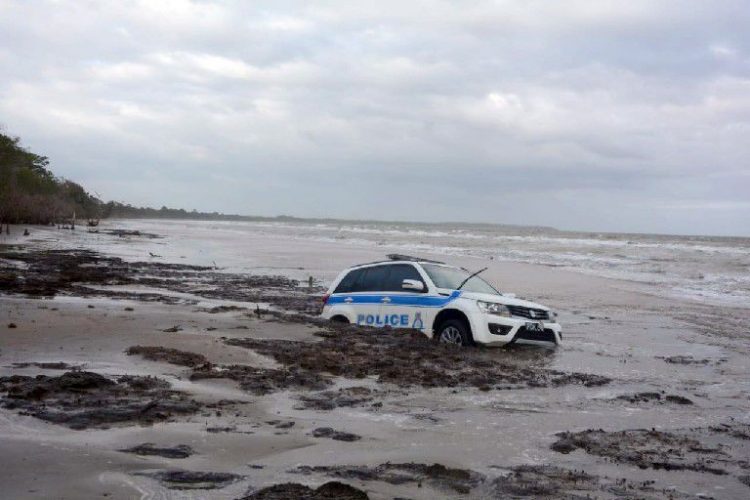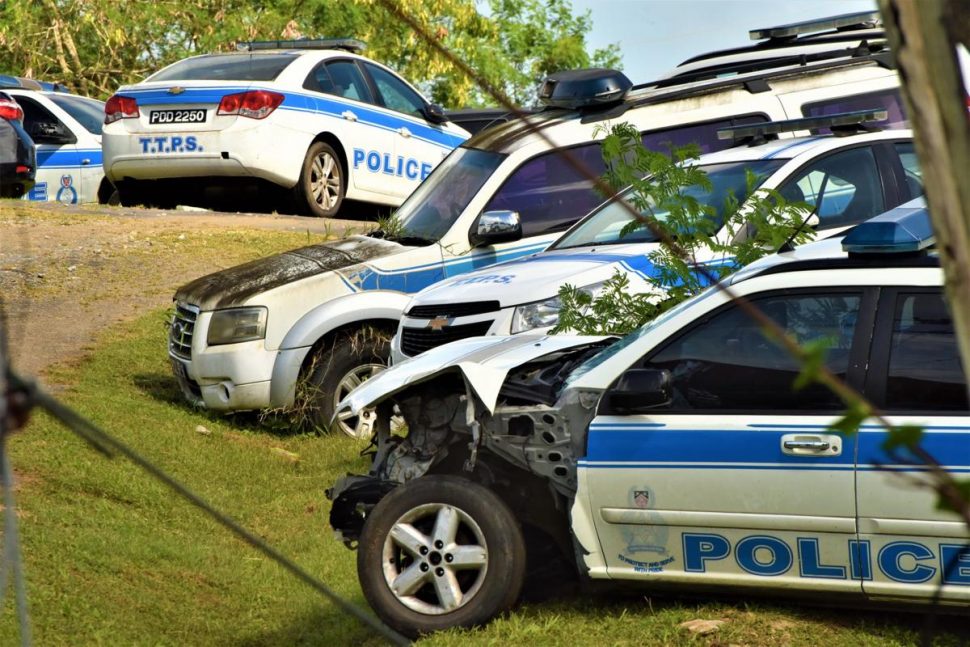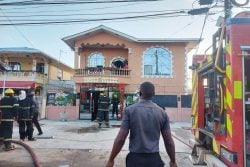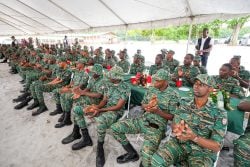(Trinidad Express) MORE than 500 police patrol vehicles worth tens of millions of dollars have ended up as scrap over the past three years.
And Police Commissioner Gary Griffith has a plan to keep the new fleet roadworthy by targeting road hogs—in police uniform.
Griffith acted last Friday after CCTV footage captured two newly-purchased Toyota RAV-4 patrol vehicles crashing into a truck in Charlieville that day.
It turned out that the police officers driving those vehicles were not responding to any distress call.
The officers, assigned to the newly-launched Emergency Response Patrol, had just installed a GPS tracking system in the patrol vehicles.
And it was that very tracking system that allowed their seniors to know that before the crash, the officers were driving at 140 kilometres per hour on the Uriah Butler Highway, where the speed limit is 100kph, and at 89 kph on the secondary road (the speed limit is 40kph) when they wrecked the State vehicles.
The officers have been suspended from driving police vehicles until the case is investigated by an internal disciplinary committee.
The two patrol vehicles, worth more than $500,000, were extensively damaged and have joined the hundreds of other cars, SUVs, pick-up trucks and police buses being kept at compounds in north and south Trinidad.
At Union Hall, San Fernando, there are at least 40 police vehicles rusting away on a hilltop near the Vehicle Maintenance Company of Trinidad and Tobago (VMCOTT).
Near the Usine Ste Madeleine sugar factory is an equal number.
Among the junk vehicles is a Suzuki Vitara SUV that three police officers took onto the beach at Galfa, Cedros, earlier this year.

The patrol vehicle became struck in the sand and was swamped by the rising tide.
The officers were suspended after giving a series of bizarre explanations as to what they were doing at a location that is considered a drug, gun and human smuggling hotspot. At least one of the officers is back at work.
There have been at least two other instances of police officers taking patrol cars from North Trinidad to pick up drugs from the south coast.
Griffith said on Saturday that police vehicles, outfitted with GPS, would now be monitored via the Operations Command Centre.
This system would ensure that vehicles remain within their area of responsibility and not divert without just cause, while ensuring effective and active monitored patrols.
It will also assist by providing a security blanket that ensures an immediate response within minutes to distress calls, on most occasions, said Griffith.
“This system will also allow the command centre to monitor the speed of each vehicle, every ten seconds, if any vehicle is going over the speed limit and is not responding to a distress call, then those officers would be made to account for their actions.”
Griffith said as of January 1 next year, a three-level system would be in place for distress calls going to the E999 call centre, and based on the severity of the threat, police officers would have a speed restriction.
“It is anticipated that this system will eliminate the strong belief by citizens that every police vehicle which is driven by a police officer, using a siren or exceeding the speed limit, is abusing their position, as all police patrol vehicles will be monitored.”
Griffith also made a request of citizens.
“In future, when they hear a police siren or police vehicles attempting to pass them, make all attempts to allow them free passage, as this means that they are using it to attend to a distress call, and if not, then they would be contacted and called in to give account for their actions,” said the Commissioner.





